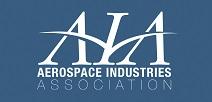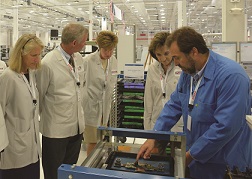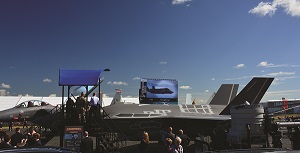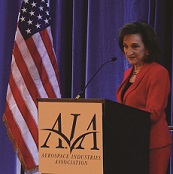

But also, this is a time of significant challenge as we witness unprecedented conflicts cascade around the globe. The events of 2014 remind us that new national security threats can come from old foes or materialize out of nowhere due to a chaotic region’s ongoing strife.
Looking at the world’s dangers through either the rose-colored glasses of a naïve isolationist or under the green eyeshade visor of a fiscal ideologue simply doesn’t work. It presents a false-color image of reality. It inhibits the clear-headed thinking we desperately need about national security and America’s competitiveness.
Right after the election, AIA commissioned a Harris Company voter survey. Harris found Americans widely recognize that security threats are increasing and are genuinely concerned that the U.S. is less secure than a year ago. Here are some findings from the survey:
-
First, 78 percent of voters believe the hostile activities of ISIS, al Qaeda and other groups contesting for control of Syria and Iraq represent an increasing national security threat.
-
The concern about this threat is bipartisan; 90 percent of Republicans and 69 percent of Democrats are worried about our security as a result of what’s going on in the Middle East.
-
Also, 73 percent say they believe the U.S. is less secure due to cuts in planned military budgets of nearly $1 trillion over a decade.
-
Given the evolving and increased threats to America’s security, a solid 69 percent of voters want to increase national security spending relative to the federal budget caps set more than three years ago. This view is shared by a majority of voters across party lines — 83 percent of Republicans, 63 percent of Independents and 60 percent of Democrats.
-
The same number of voters — 69 percent — say they would be more likely to support a candidate who wants to increase spending on national security.
-

The Second to None Campaign has morphed into a state-of-the-art online grass roots advocacy effort. We call it the Second to None Coalition. This is the first time ever our industry has engaged in a major grass roots advocacy effort like those of other organized political movements of recent vintage.
Our message is that elected leaders must address the need for the U.S. to maintain our military superiority and keep ahead of the technology development curve. They also must recognize our military needs the capability to respond to new security challenges that often materialize due to major natural disasters and outbreaks of deadly disease such as the recent Ebola crisis.
We also contend that the downward spiral of defense spending and federal R&D investment is leading to a dangerous decline in our highly skilled aerospace and defense workforce. Our skilled workforce must be reinvigorated as the baby boom generation of engineers and scientists begins to retire en masse.
A third message is that budget austerity undermines our ability to invest in critical R&D that leads to serendipitous breakthroughs like GPS.
All of these concerns translate into clear policy objectives that AIA is pursuing on the industry’s behalf.

Turning to the Executive Branch, in 2015, AIA hopes to see real movement on a National Defense Export Strategy and a broader aerospace and defense trade initiative.
In 2015, AIA will work to ensure the Pentagon moves forward on needed defense acquisition system reform. The current system hurts our smaller firms, inhibits innovation and makes it harder to get needed equipment in the hands of our war fighters.
Despite the downward pressure the federal budget situation has exerted on our industry, with a big boost from civil aircraft and space sales abroad, overall aerospace exports grew from roughly $111 billion in 2013 to nearly $119 billion in 2014. This resulted in a net surplus of nearly $61.2 billion, our best aerospace trade balance in history.
The Administration promised five years ago to double U.S. exports by 2015. The aerospace industry is doing its part to make that pledge come true.
Let me close with a few thoughts as we look back on the past few years of paralyzing gridlock in Washington. An era I think it’s fair to describe as wrought with political polarization and dangerous procrastination.
AIA has two simple messages for members of the 114th Congress and the current Administration as well as to candidates gearing up for the 2016 elections. On behalf of the aerospace and defense industry, we make one simple request – please start listening.

To the new Congress, remember the saying “Ideology knows the answer before the question has been asked.” When the small business owner from your district tells you failure to reauthorize Ex-Im puts his workers at risk, listen first to this all-important voice from back home.
When the Joint Chiefs tell you American lives will be lost if we don’t restore defense investment to adequate levels….When an intelligence analyst tells you that defeating ISIS requires new strategies and new technologies for the war fighter….And when the wounded warrior at the VFW back home tells you that his mine resistant, ambush protected vehicle saved his life…listen very carefully.
My final message for the 114th Congress and all candidates looking at a run in 2016 is remember those 69 percent of voters who want to back candidates who support more spending on national security. Ask yourself; am I ready to make the tough decisions in the next 12 months to protect America?
If not, we respectfully suggest you consider the words of Winston Churchill, who in a more dire time said, “The Americans will always do the right thing…after they’ve exhausted all the alternatives.”

